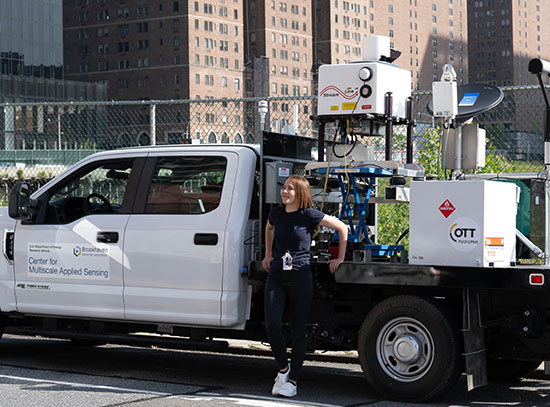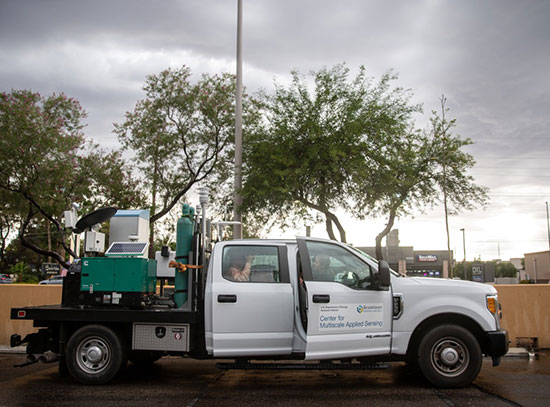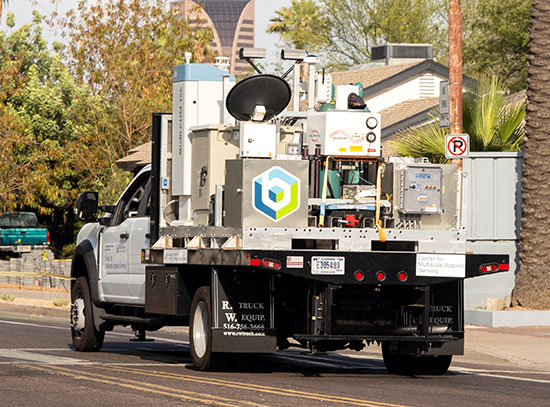



The Center for Multiscale Applied Sensing (CMAS) is a multi-disciplinary center that focuses on acquiring, analyzing, and interpreting measurements from networks of sensors in highly heterogeneous areas, including complex urban and coastal locations and renewable energy facilities.
Managing infrastructure and energy sources and sinks in complex urban and coastal locations is one of the most important development challenges of the 21st century. A key component of this challenge is acquiring currently unavailable multi-parametric, multi-scale data. These new data sources will be used to evaluate and improve numerical models to increase predictive capabilities relevant to the multiscale interactions of these hotspots with local weather and the environment.
CMAS’s mission is to provide innovative sensing solutions and applied applications for observing and predicting weather and environment around energy hot spots. CMAS does this by bridging the gap between science and technology in observing and predicting energy demands, flows, and distributions using modern, distributed sensors, innovative analysis and synthesis, and high-resolution numerical tools.
The Center for Multiscale Applied Sensing is part of Brookhaven National Laboratory's Environmental Science and Technologies Department.








